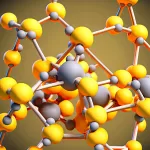
The science and technique of muscular development is called hypertrophy. It’s not simply about lifting weights. It’s being aware of how muscle fibers function, heal, and build strength. How does every rep, every set, and every meal contribute to the big goal of muscle growth?
Hypertrophy is
The Two Mighty Paths of Muscle Growth: Behold the two champions of hypertrophy – myofibrillar and sarcoplasmic. Myofibrillar hypertrophy is the hero of strength, turning your muscle fibers into denser and mightier versions of themselves. Sarcoplasmic hypertrophy, on the other hand, is the wizard of size, enchanting your body to hold more energy and fluid, giving them that pumped-up, robust look.
Microtears: The Tiny Catalysts of Muscle Majesty: Every time you push your muscles, they experience microtears. These tiny tears are actually golden tickets to growth. They signal your body to rush in and start the repair and reinforce process.
The Banquet of Growth – Feeding Your Muscles: Proteins: aid in muscle growth and repair. Energy from carbohydrates keeps you awake and prepared for activity. Fats: they promote both muscular growth and general health. Additionally, the water that powers everything guarantees that nutrients reach their intended locations and your muscles remain hydrated and content.
Rest: In the quest for muscle mass, rest is an important part. It’s during rest that your muscles weave their magic, repairing and growing stronger. This isn’t downtime; it’s prime time for growth! So embrace those rest days and cherish every night’s sleep as your body’s opportunity to turn today’s workouts into tomorrow’s strength.
Muscle fibers
What Are Muscle Fibers?
Imagine your muscles are made of tiny threads. These threads are what we call muscle fibers. They bundle together to help you do everything from lifting a spoon to running a marathon. There are two main types of these fibers, and each has its own special job in your body.
The Steady Ones: Type I Fibers
Type I fibers do not provide a rapid increase in speed, but they allow you to travel longer distances. They’re super important for activities like walking, swimming long distances, or any activity that requires endurance. These fibers don’t tire out easily, so they’re great for keeping you on the move for a long time.
The Quick Ones: Type II Fibers
Type II fibers give you short bursts of powerful energy. Think of them when you jump high, sprint, or lift something heavy. Unlike Type I, these fibers get tired quickly, but they’re all about giving you powerful movements when you really need them.
Why Knowing This Matters
Understanding these two types of fibers can help you train smarter. If you want to improve your endurance, exercises that use Type I fibers more, like jogging or cycling, can be really helpful. If you’re looking to boost your strength or speed, focus on activities that engage Type II fibers, like sprinting or weightlifting. You can train your body to improve both types!
Training Tips for Happy Muscles
Now that you know about your muscle fibers, here are some simple ways to help them grow and stay healthy:
- Mix It Up: Do a variety of exercises to engage both types of fibers.
- Rest Well: Give your muscles time to rest and repair. This is when they grow stronger.
- Eat Right: Fuel up with good nutrition to give your fibers what they need to perform and recover.
- Stay Hydrated: Drink plenty of water to keep everything in your body working smoothly.
By understanding and taking care of your muscle fibers, you’ll be on your way to being stronger, faster, and more enduring. Remember, whether you’re a fan of marathons or prefer quick sprints, your muscle fibers are there to support you every step of the way. Treat them well, and they’ll keep you moving beautifully through life. Cheers to healthy muscles!
The Muscle Menu
Protein: the main benefit of muscles: Protein is the main character. It’s the go-to for repair, recovery, and building new muscle. Lean meats, legumes, and dairy are your workout’s best friends, helping to heal your workout wounds and make them stronger. Aim to have a protein pal at every meal; your body will thank you with growth!
Carbohydrates: The Energy Entertainers: Supports your energy and recovers quickly. Whole grains, fruits and vegetables will keep you energetic and in a good mood.
Fats: Fats often get a bad rap, but they’re actually crucial to a balanced muscle-building diet. Think avocados, nuts and seeds – these are especially important fats
Water: The Elixir of Muscle Life: Never underestimate the power of hydration! Water is the MVP, transporting nutrients and keeping your whole system in check.
Foods that are best not to eat: Just like eating snacks to build muscle, there are also unhealthy foods to avoid. Excessive sugars and processed goodies are the crashers you don’t want – they bring empty calories and fat gain. Alcohol can throw a wrench in your recovery and hydration. And skipping meals. Your muscles will not grow!
Muscle recovery
Sleep
Sleep isn’t just for dreaming; it’s when your body does its best muscle repair work. Think of each hour of sleep as a magic hour where your muscles are getting patched up and strengthened. Aim for a full night of restful sleep, around 7-9 hours, to give your body enough time to do its nighttime handywork.
Eat Right
Food is your body’s fuel, especially after a workout. Your muscles are hungry for nutrients that will help them repair and grow. Eating a balanced mix of proteins, carbohydrates, and healthy fats is like providing building blocks and energy for your muscles. Don’t forget to drink water too! Staying hydrated helps all those nutrients travel to where they need to go and keeps everything in your body running smoothly.
Move
While rest is crucial, a bit of gentle movement on your off days can do wonders. Activities like a leisurely walk, a light bike ride, or some easy stretches can keep your blood flowing. This helps carry fresh oxygen and nutrients to your muscles, supporting their recovery.
Relief and Relaxation
Gentle stretching and using a foam roller can feel like giving your muscles a soothing massage. It’s about easing out the tightness and making sure your muscles aren’t holding onto any stress. Regularly stretching and rolling out can enhance your flexibility and make your muscles feel relaxed and rejuvenated.
Enjoy Your Rest Days
Rest days are as important as your workout days. They’re the time when your body gets to pause and focus solely on repairing and strengthening your muscles. So, don’t feel guilty about taking a day off from the gym. Embrace it! Enjoy the downtime, knowing that it’s an essential part of your muscle growth journey.
Essential Exercises for Hypertrophy
Embark on your muscle growth journey with these targeted exercises designed for hypertrophy. Remember, consistency, proper form, and progressive overload are key to seeing results.
- Bench Press: Lie back on a bench, grip a barbell with hands slightly wider than shoulder-width. Lower it to your chest, then push it back up until your arms are extended.
- Dumbbell Flyes: Lie on a bench with a dumbbell in each hand. With a slight bend in your elbows, open your arms wide to the side and then bring the weights back together above your chest.
- Pull-Ups: Grasp an overhead bar with a wide grip, pull your body up until your chin is over the bar, then lower yourself back down with control.
- Bent-Over Rows: Holding a barbell or dumbbells, bend your knees slightly and lean forward. Pull the weights towards your lower stomach, then lower them back down.
- Overhead Press: Standing or seated, press a barbell or dumbbells from shoulder height upwards until your arms are fully extended overhead, then lower back down.
- Lateral Raises: Hold dumbbells at your sides. Lift them out to the side until they reach shoulder height, then slowly lower back down.
- Squats: With a barbell on your upper-back, bend your knees and hips to lower down as if sitting back into a chair, then drive back up to standing.
- Deadlifts: With feet hip-width apart, grip a barbell on the floor and lift it up by straightening your hips and knees, then lower it back down.
- Bicep Curls: Hold dumbbells in each hand and curl them towards your shoulders, then lower them back down with control.
- Tricep Dips: On parallel bars or a bench, lower your body by bending your arms, then push back up to straighten them.
Combine these exercises into a balanced routine, focusing on different muscle groups each session. Adjust weights, sets, and reps to suit your level and remember to give your body time to rest and recover between workouts. Happy lifting!
Common Myths and Misconceptions
When it comes to building muscle, there is as much misinformation as there is good advice. Myths surrounding supplements, the “best” exercises, and the dream of instant results can derail even the most dedicated athletes.
Myth 1: Supplements Are Essential for Building Muscles
Many people think it’s practically hard to grow muscle without supplements. In actuality, supplements are not miracle cures, although they might be beneficial. The three main factors that affect muscle development are nutrition, activity, and rest. Although they can aid in recuperation and nutrition, supplements like protein powders and creatine are meant to be used in conjunction with a balanced diet. Real food is the finest tool for growing muscle since it has the right amounts of protein, carbs, and fats.
Myth 2: There Are “Best” Exercises for Everyone
Another common belief is that certain exercises, like squats or bench presses, are universally the best for muscle growth. While these exercises are effective for many, the best exercise is the one that suits your body, goals, and preferences. Everyone’s body responds differently to various exercises due to factors like genetics, previous injuries, and personal preferences. A well-rounded routine that challenges various muscle groups and keeps you engaged is far more effective than blindly following a one-size-fits-all regimen.
Myth 3: Overnight Results Are Possible with the Right Routine
Perhaps the most pervasive myth is that rapid, almost overnight results are just one secret routine away. The reality of muscle growth is that it’s a slow and steady process. Significant changes in muscle size and strength take time, consistent effort, and patience. Anyone promising rapid transformations is likely overlooking the importance of gradual progression and consistent hard work. Trust in the process, and don’t get discouraged if you don’t see immediate changes.
Understanding these truths about hypertrophy can set you on a path to more effective, enjoyable, and sustainable muscle building. Stay informed, stay patient, and stay dedicated to your journey. With time and effort, you’ll see your hard work pay off!
Conclusion
Hypertrophy comes in two flavors: sarcoplasmic and myofibrillar. It takes a lot of time and complexity to grow muscles. Your muscles sustain tiny rips each time you lift weights, which eventually mend to create stronger muscles. Your diet has a significant impact on the changes in your body. While protein has the highest significance in your diet, lipids and carbs are equally crucial. Don’t forget to get enough sleep; your body will appreciate it. Your body is developing and changing while you are at rest.
FAQs
Myofibrillar and sarcoplasmic. Myofibrillar Hypertrophy – Transforms your muscle fibers into denser, more powerful versions of themselves. Sarcoplasmic hypertrophy – allows you to retain more energy and fluid, giving you a pumped-up and strong appearance.
Protein. They help repair and build muscle better than anything else.
They are useful, without them your nutrition will not be complete. Speaking about the fact that fats only make things worse, know that this is a myth. The main thing is to use it in moderation.







